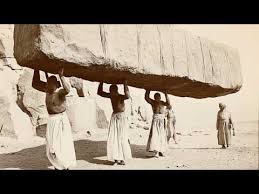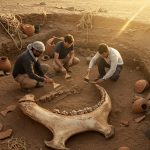Identities Reimagined: The Hidden Truth Behind Ancient Labor and Lost History

For centuries, the iconic pyramids of Egypt have been viewed through a lens of oppression, depicted as monumental tombs built by enslaved laborers enduring unimaginable suffering. This narrative has dominated popular understanding and shaped our perception of ancient Egyptian society. However, recent archaeological research is turning that narrative on its head, revealing a far more nuanced and complex picture of the civilization that constructed these awe-inspiring structures.

Evidence now suggests that the colossal pyramids were built by skilled laborers organized in seasonal workforces. These workers were not merely slaves; they were fed, housed, and respected for their craftsmanship. Tomb inscriptions and artifacts found at workers’ villages indicate a society that valued expertise and innovation rather than relying solely on forced labor. The discovery of well-planned labor camps, complete with medical facilities and communal dining areas, paints a picture of organization and respect for the workers’ vital contributions.
Historians are now faced with a radical reinterpretation of the evidence, forcing them to question long-held assumptions about the social and economic structures of ancient Egypt. Were the pyramids monuments to oppression, or could they be seen as celebrations of human ingenuity and organizational prowess? This shift in perspective not only alters our understanding of the pyramids themselves but also invites us to explore the broader implications for ancient Egyptian identity and culture.

Each new discovery uncovers the complexities of civilization and challenges the myths that have been perpetuated for centuries. The realization that the builders of the pyramids were respected laborers rather than oppressed slaves adds depth to our understanding of ancient Egyptian society. It highlights the importance of teamwork, skilled craftsmanship, and the value placed on collective effort in achieving monumental goals.
Moreover, this emerging narrative encourages us to rethink the way we approach historical interpretations. It serves as a reminder that history is often more fascinating—and more mysterious—than the simplified stories we think we know. The pyramids, once symbols of despair, now stand as testaments to human creativity, resilience, and cooperation.

As we delve deeper into the past, we uncover the hidden truths that shape our understanding of ancient civilizations. The story of the pyramids is not merely one of labor and suffering but a celebration of human achievement that echoes through the ages. In reimagining these identities, we not only honor the legacy of those who built the pyramids but also enrich our appreciation for the complexities of history itself. The journey to uncover these truths continues, inviting us to explore the layers of meaning hidden beneath the sands of time.
🎥 Watch more:











